|
BULB LOG 13 29th March 2007
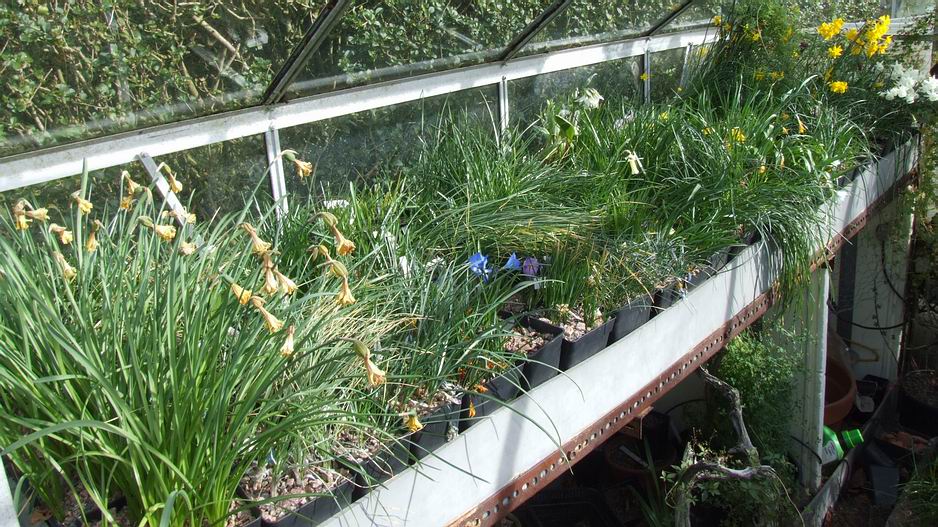
Bulb house left
I thought it was time to bring you up to date with what is happening in the bulb houses. Being mostly Crocus, the left hand plunge of the bulb house has passed its peak of flower power but a few flowers still remain at the far end where some of the later Narcissus are just coming out.
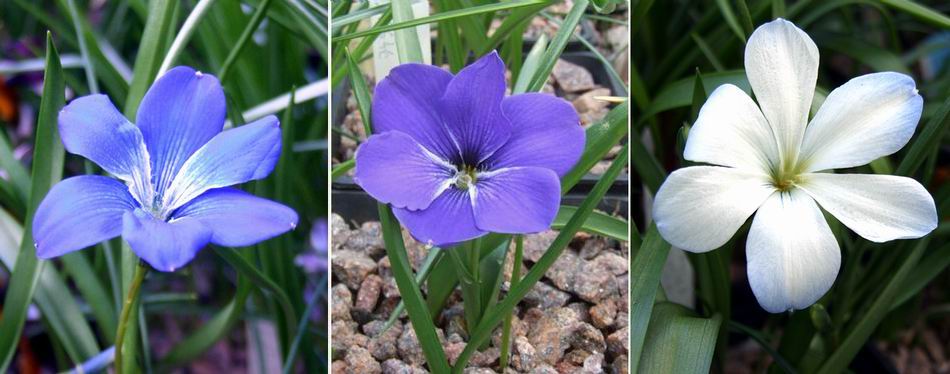
Tecophilaea cyanacrocus
Half way down, a few pots of seedling Tecophilaea raised from our own seeds are flowering for the first time, showing interesting variations from deep blue through purple to almost pure white. It is difficult to choose a favourite and it is a strange thing about gardeners that when a plant is famously wanted for its stunning blue colour we should want to select a white form.
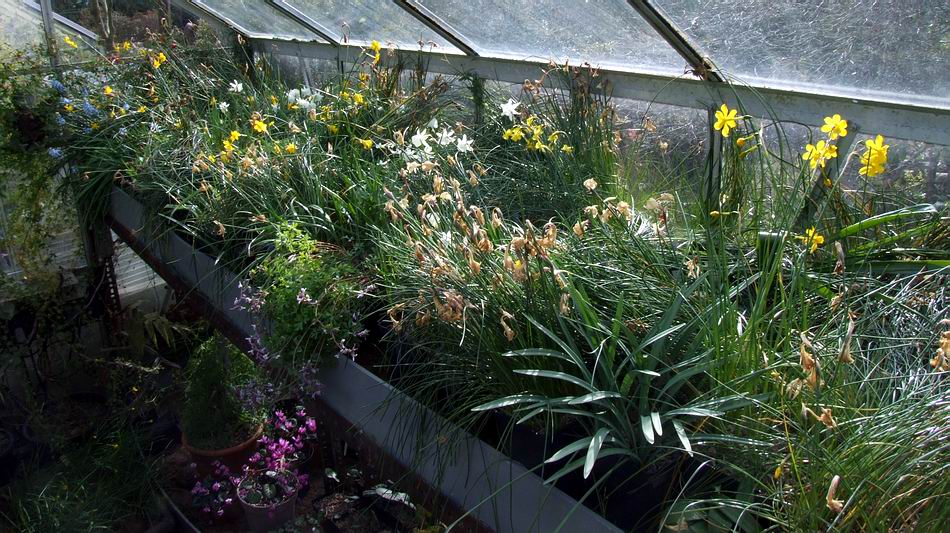
Bulb house right
There are still a number of Narcissus coming into flower pushing their way through the jungle of the right hand plunge. Growing as many bulbs as this so close together is not the ideal method of cultivation - it would be much better if each pot could have at least 30 centimetres of space all around then they would not become etiolated as they compete for the light. However I want to grow as many different bulbs as I can in the glasshouse space that I have squeezing them in as necessary.

Aphids
Apart from etiolation the other problems I have to watch for are aphids which can hide unseen in the mass of greenery and before you know it you have an infestation. I am very vigilant in checking each plant to spot the early signs of greenfly which I can simply wipe out with my finger and thumb if it is an isolated outbreak; if I spot more I will give a spray with a systemic insecticide. The other problem is wet rot and botrytis which is more likely to attack when the weather is cold and wet and the best protection is to keep as much ventilation as possible, using fans when necessary, to move the air around the leaves.
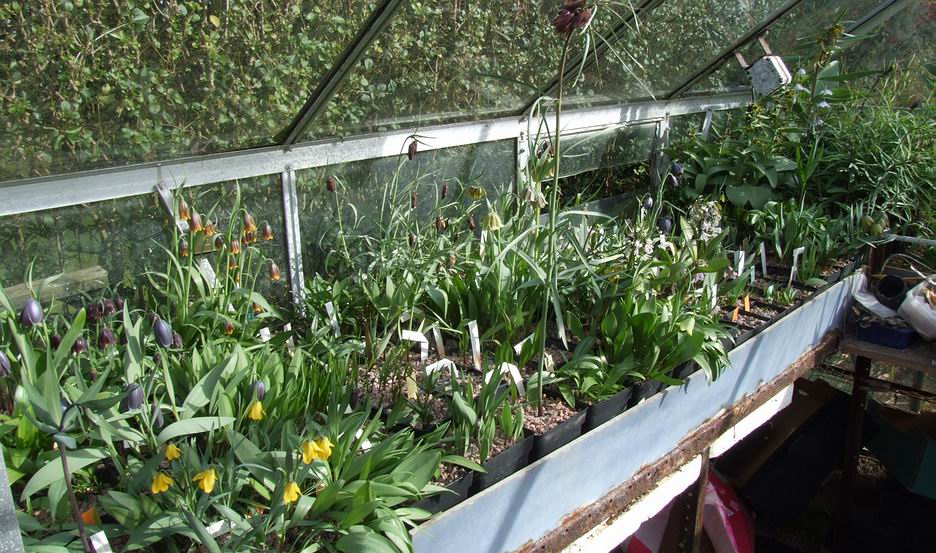
Fritillaria house left
Moving to the Fritillaria house here is the left plunge showing how quickly everything has moved on in the recent mild weather.
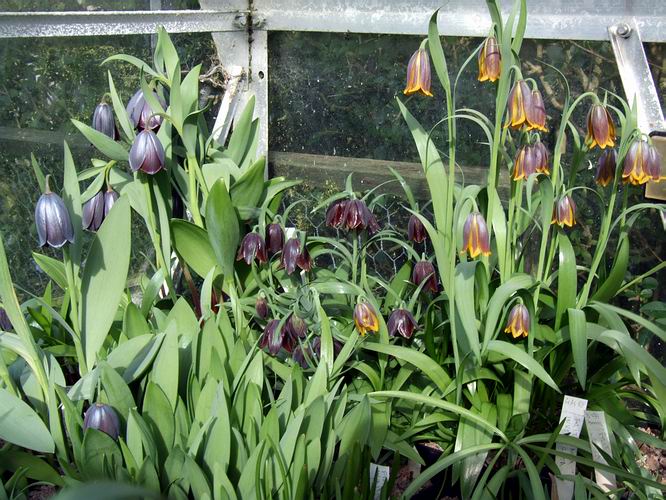
Fritillaria caucasica, davisii and pinardii
Many frits are now in full flower like this group in the corner of Fritillaria caucasica, davisii and pinardii which despite having to compete for the light are very healthy.
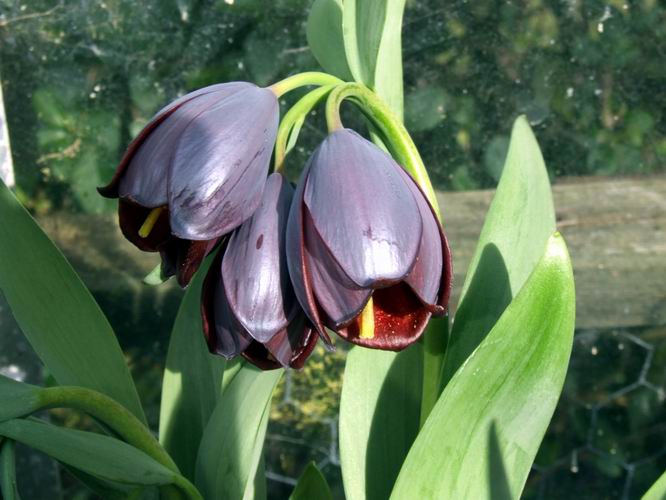
Fritillaria caucasica
A few of the Fritillaria caucasica bulbs have three large flowers per stem. It is easy to see how this plant was once called Fritillaria tulipifolia with its wide leaves and even the flowers look like a dark tulip flower that has turned downwards. Fritillaria caucasica is a quite a variable species and we have other forms with much smaller flowers.
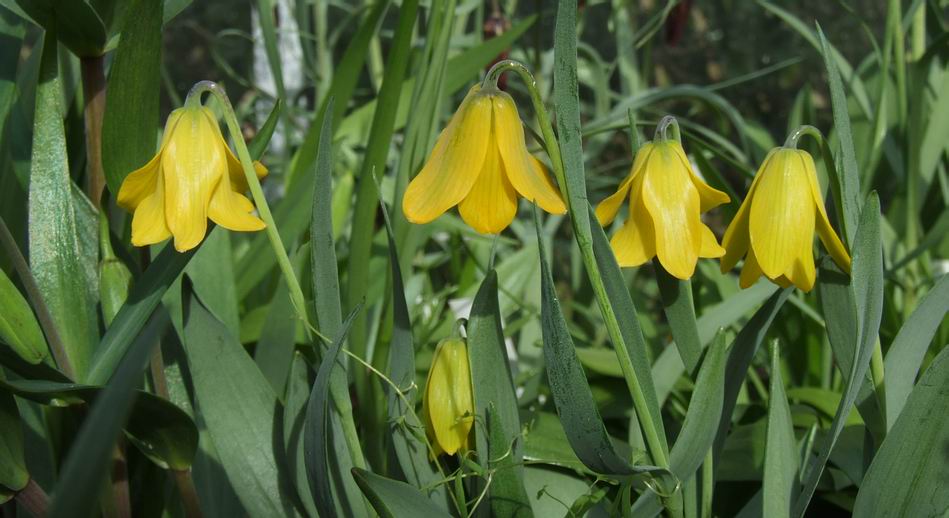
Fritillaria carica
Fritillaria carica is another frit that we have many forms of and when they are like this one, all yellow with the out-turned petals, they are easily distinguished from F. pinardii but I have some plants which I cannot decide if they are Fritillaria carica or pinardii.
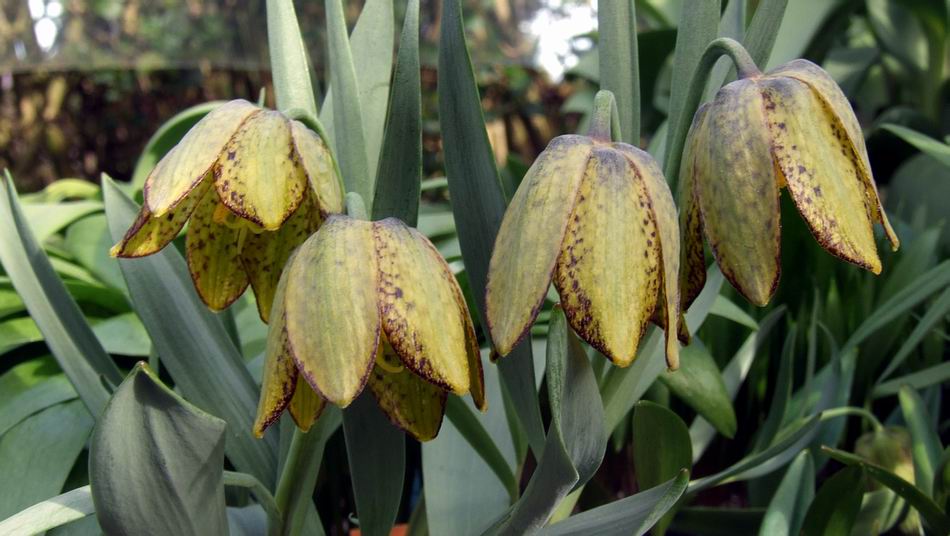
Fritillaria crassifolia
Another very variable species is Fritillaria crassifolia; you could almost fill a glasshouse with nothing but the forms and sub species of this variable group.
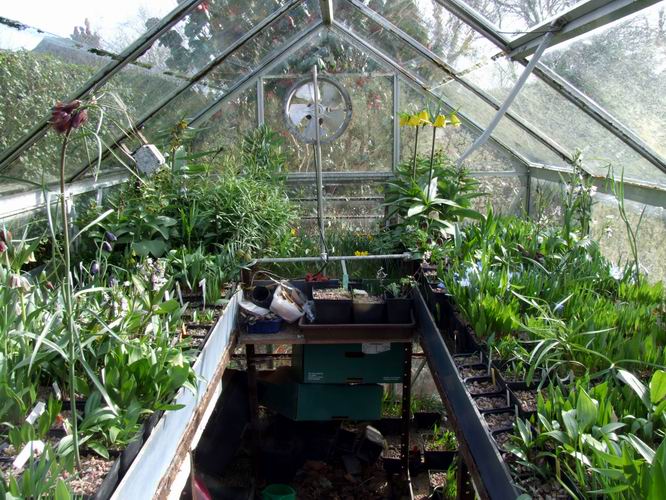
Fritillaria house centre
The centre shot of the frit house shows how much growth there is now.
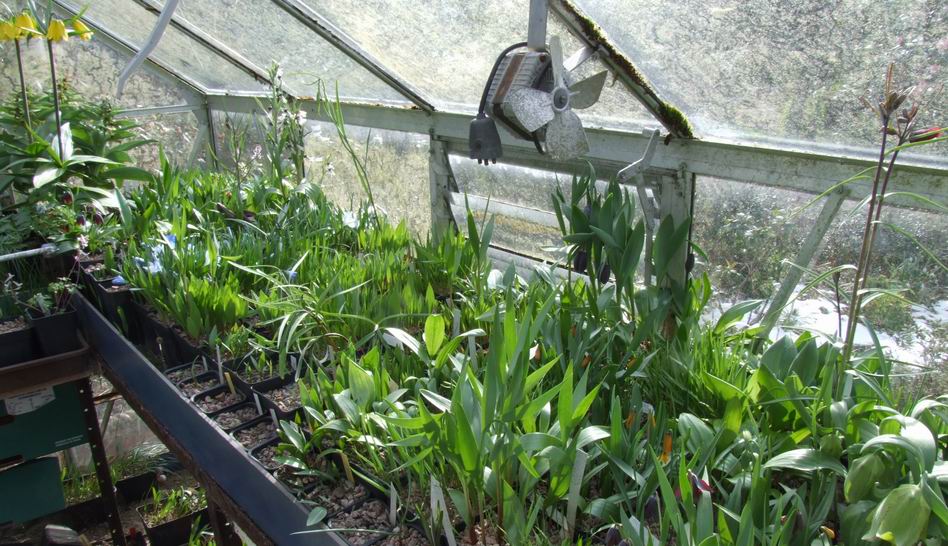
Fritillaria house right
I have more pots of young bulbs not yet of flowering size on the right hand side as well as many of the later flowering species. This was not intended but I must think if I could re-arrange them in the summer to maximise the space and the light by mixing the non-flowering and later flowering ones in with the early ones. As I hope that they will all reach flowering size in the next year or two this exercise might not be worth the effort.
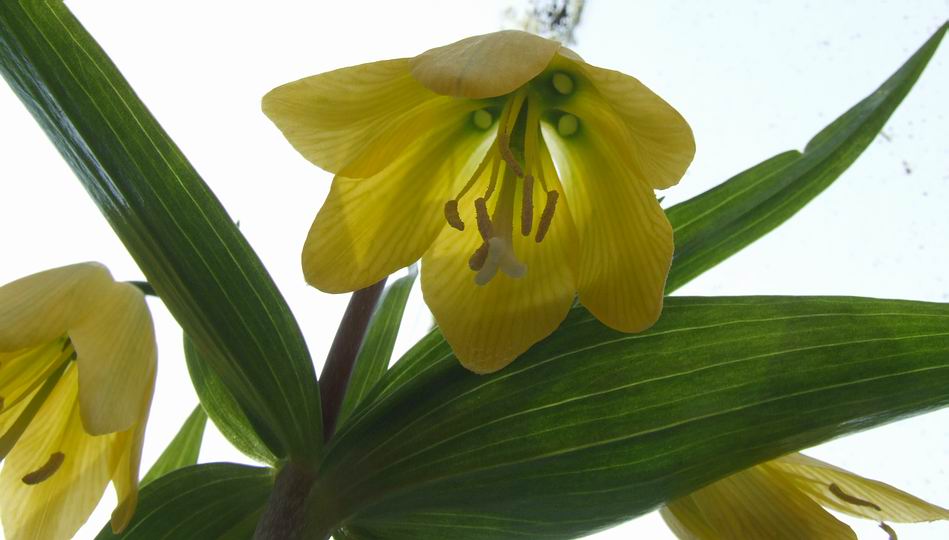
Fritillaria chitralensis
In the top left hand corner of the last picture you can see Fritillaria chitralensis with its beautiful yellow flowers which are held high enough to be pictured from the view of a pollinating insects. The deep nectaries are very attractive to my eye and as they hold a sweet liquid they must also be a great lure for insects to come in and pollinate the flowers as they brush past the pollen laden anthers. Unfortunately we do not have many flying insects around so far this year so I have been pollinating Fritillaria chitralensis every day with my paint brush and now some of the petals are dropping off and the pedicle is turning upwards, a good sign that I will get some seed again this year.
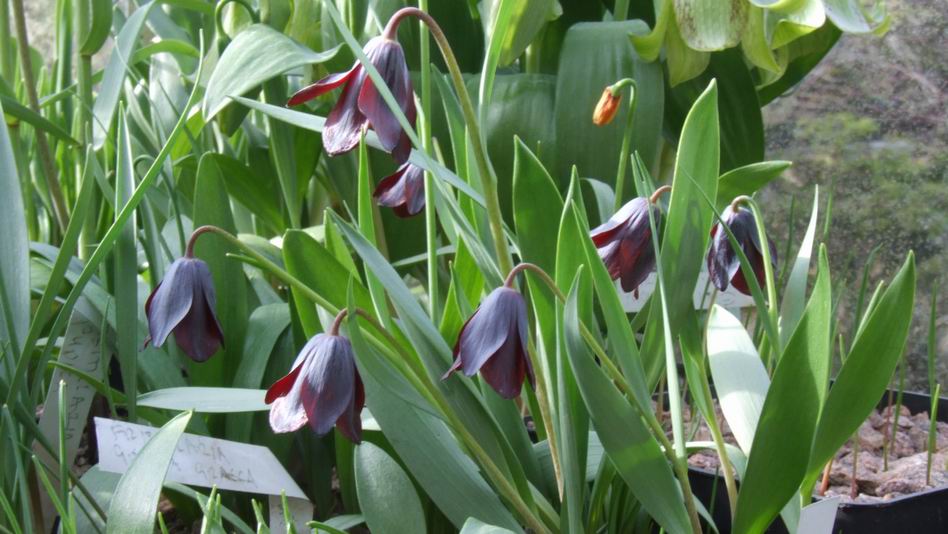
Fritillaria armena
One more in flower on this side is Fritillaria armena it is a bit like a smaller version of F. caucasica. This is my favourite form with its flaring petals and it increases by bulbils.
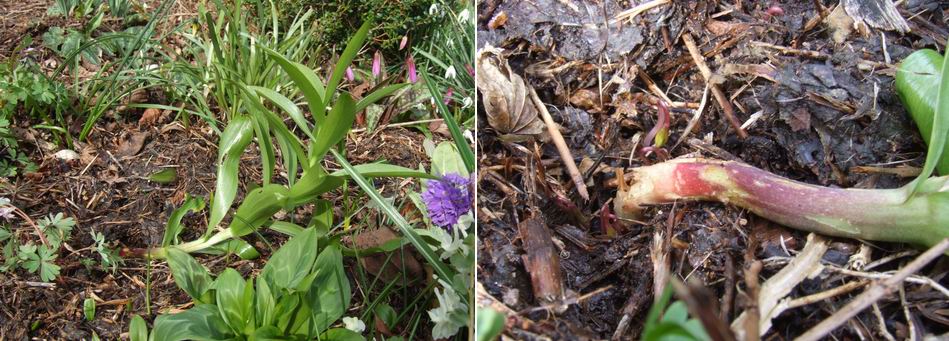
Fritillaria raddeana stem
When I saw this Fritillaria raddeana stem lying at an angle in the garden I thought that it had been blown over or snapped by the strong winds we have had. On closer inspection I discovered that the bottom of the stem had been chewed through by a slug just below the mulch. Luckily despite the structure of the stem having been chewed a small portion of the outside skin is still attached at one side and this will allow the leaves to feed and build the bulb for next year. It is a non flowering stem so it does not have the added burden of supporting several flowers.
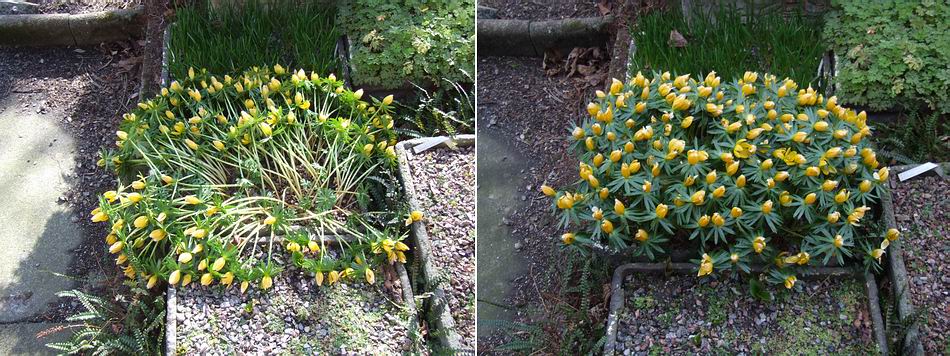
Eranthis 'Guinea Gold'
Another interesting lesson can be learned form this trough of Eranthis 'Guinea Gold' which collapsed from drought despite all the rain we have been having recently. The canopy of leaves sheds much of the falling rain away from the trough just like an umbrella would. The lesson here is that, even when it rains, plants in pots and containers may still need watering - this trough full sat back up within half an hour of giving it a good soaking.
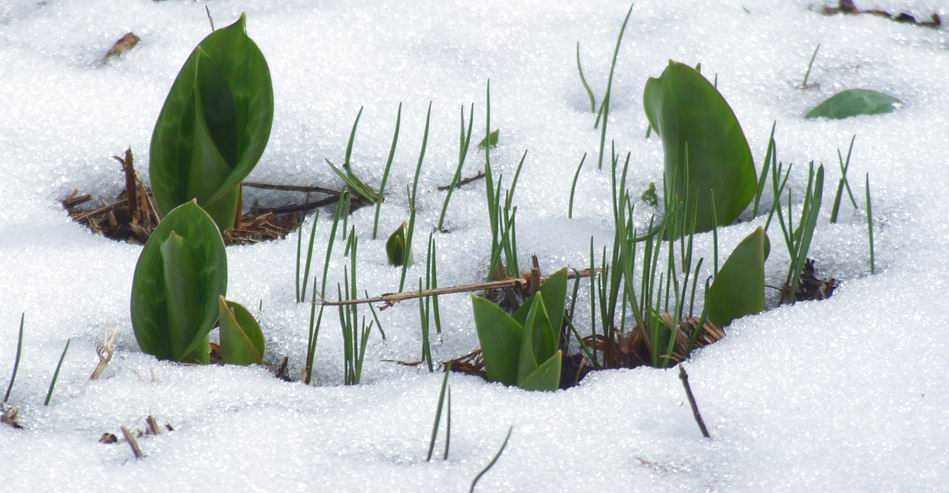
Erythronium leaves and seedlings
We are not yet clear of the cold as more snow is forecast but I hope that it will just be a light shower like this one we had last week which did not harm the erythroniums and their seedlings which are emerging in the garden.
^ back to the top ^
|

